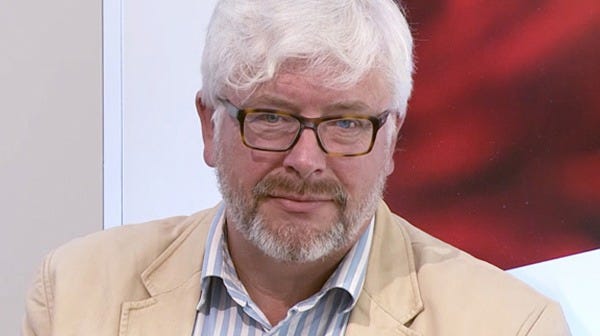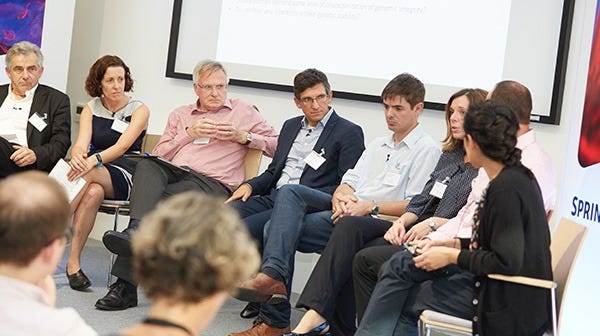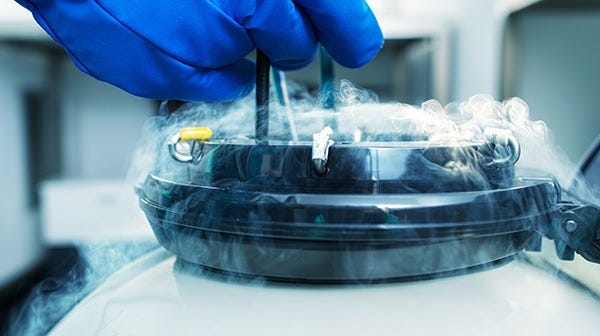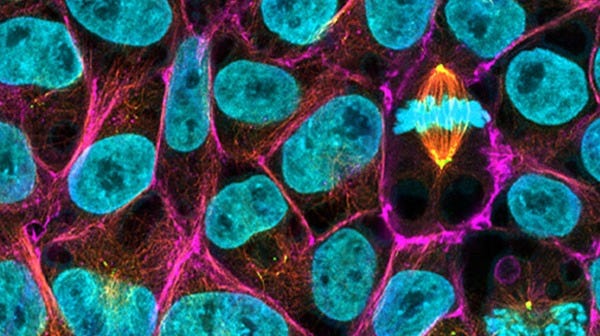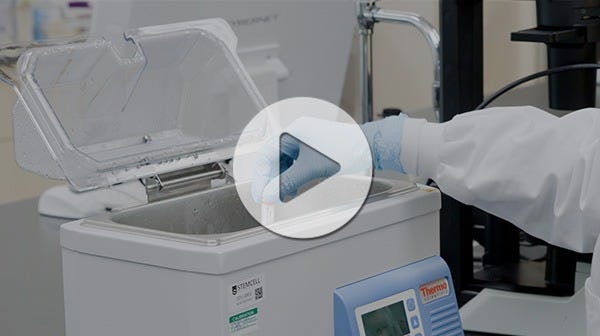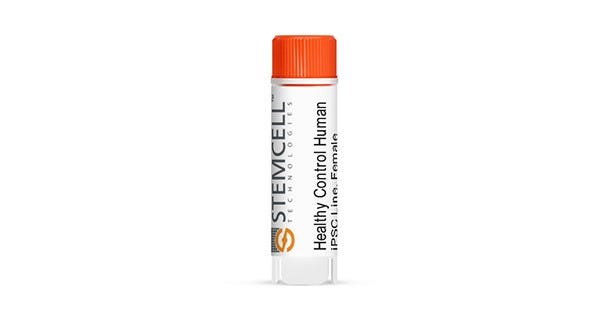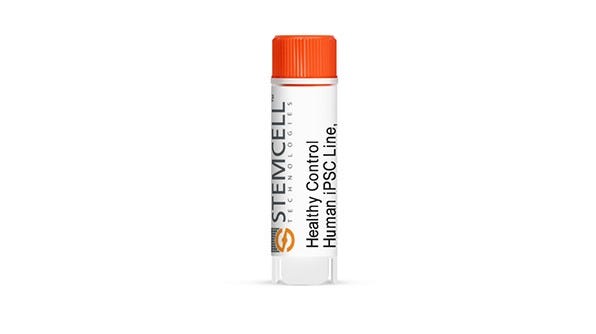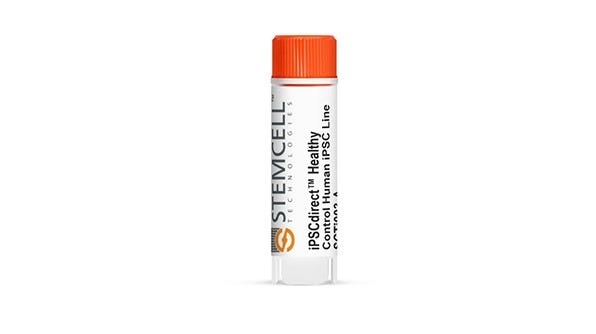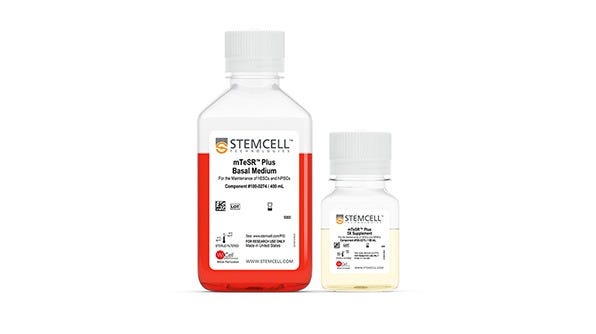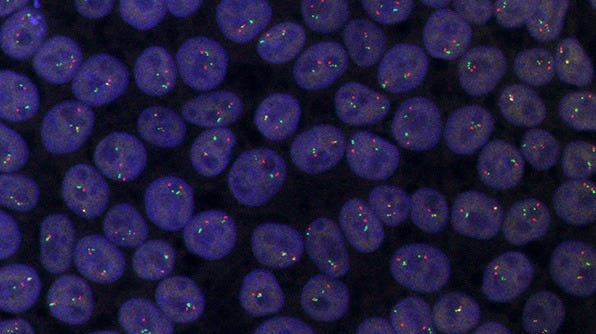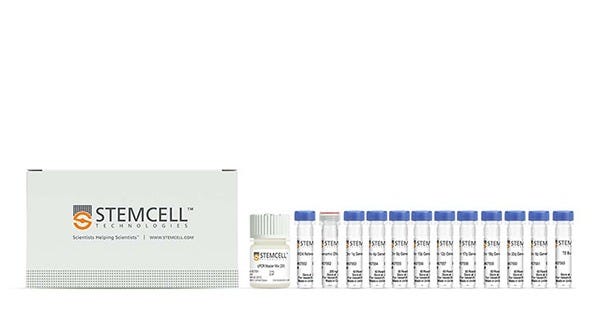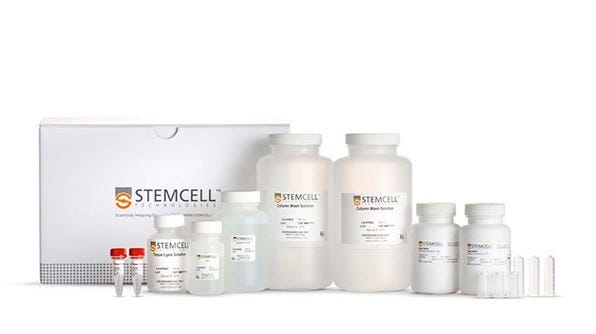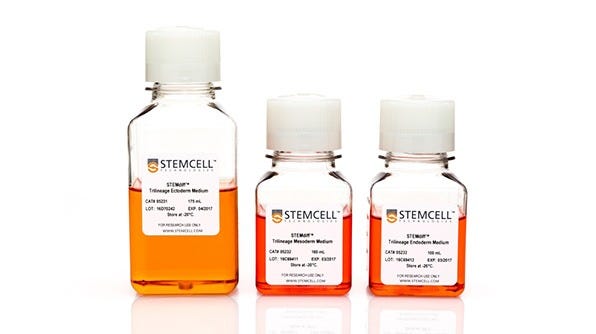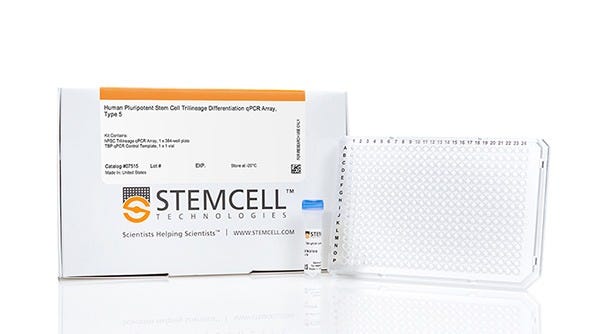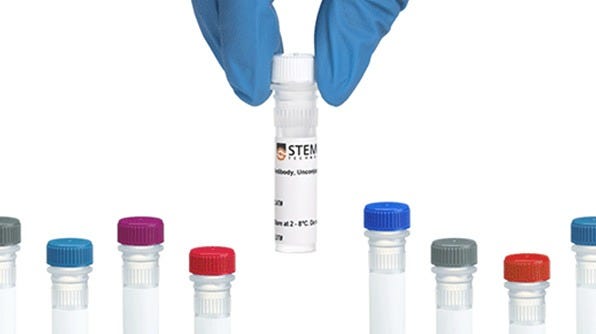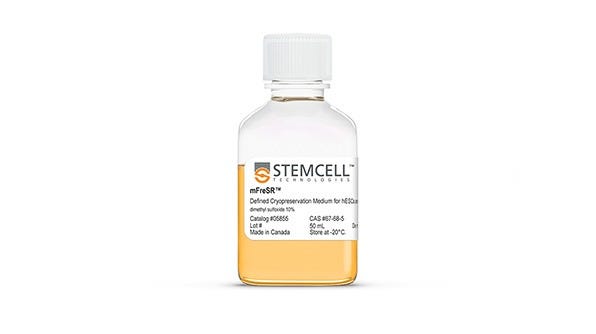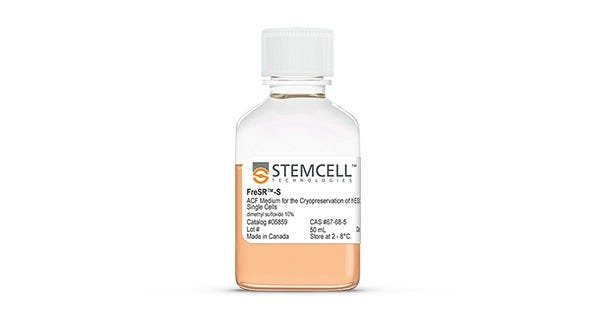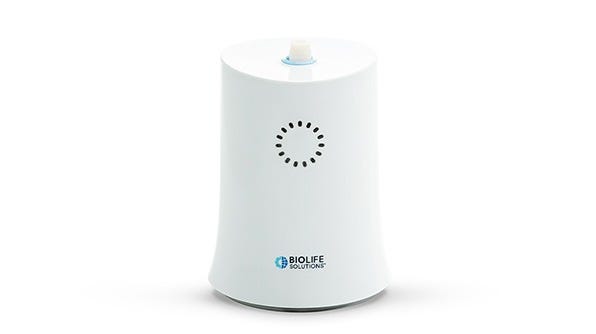Human Pluripotent Stem Cell Banking
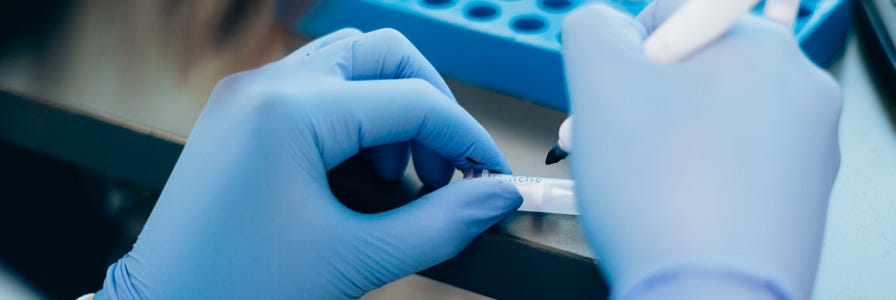
With the ability to self-renew indefinitely and differentiate into any cell type, human pluripotent stem cells (hPSCs) have become an invaluable tool for studying human health and disease. As the use of hPSC-based models continues to expand globally, concerns about variability and experimental reproducibility have come to the forefront, prompting renewed focus on hPSC quality. Standardized cell banking practices have been identified as a key solution to improve consistency and reliability in hPSC-based research.
Read on to learn the fundamental principles and best practices of hPSC banking, and discover tools and resources to support the formation of a well-characterized cell bank.
hPSC Quality Concerns and the Role of Cell Banking
While human embryonic stem cell (hESC) researchers continue to predominantly use a handful of well-established lines (e.g. H1, H7, H9), the advent of induced pluripotent stem cells (iPSCs) and increasing ease of hiPSC derivation has led to a rapid expansion in the number of hiPSC lines being created and used worldwide, across a variety of research fields.1 As of 2018, the number of hiPSC lines published in the literature was estimated to far exceed 10,000.1 This figure, combined with the finding that approximately a third of hPSC lines submitted to stem cell repositories for banking and distribution have been found to fail minimum quality standards,2 raises concerns about the quality of hPSCs used in research, and consequently, the reproducibility and reliability of published experimental results.
As recommended by the International Stem Cell Banking Initiative (ISCBI) and the International Society for Stem Cell Research (ISSCR), robust cell banking procedures are essential for addressing variability and quality concerns in hPSC research.3,4 By implementing standardized banking and characterization practices, researchers can ensure that hPSC lines undergo rigorous quality control, minimizing the risks of contamination, genetic drift, and functional inconsistencies that can arise from prolonged culture. As the number of researchers using hPSCs continues to grow, widespread adoption of standard cell banking practices will be key for improving data reliability and experimental reproducibility, as well as for supporting translational applications, such as the development of stem cell-based therapies.
In addition to ensuring hPSCs meet quality standards, and improving experimental reproducibility, generating a well-characterized cell bank offers many practical benefits for your day-to-day lab work. The initial effort and resources invested in the creation and characterization of the cell bank will save you time and money in the long term—providing a consistent supply of high-quality cells that will last for the duration of your project, or even for multiple projects. Furthermore, your cell bank provides peace of mind—providing multiple saved checkpoints you can rely on if anything goes wrong in your experiments. Storing some cells from your bank off-site in a second geographical location is highly recommended, providing an additional safety net that protects your research in case of an emergency situation such as a freezer failure or natural disaster.
What Is a Cell Bank?
A cell bank is a collection of cells that have been expanded from a single culture, pooled to ensure homogeneity, and cryopreserved under standardized conditions. Pooling the cell population prior to freezing is crucial, as this minimizes variability between vials and allows the results of characterization testing performed on any single vial to be representative of the entire bank. A well-characterized cell bank thus provides researchers with a reliable source of quality-controlled cells for their hPSC-based studies, improving the reproducibility and validity of experimental data.
Who Should Make a Cell Bank?
It is a common misconception that cell line banking is necessary for commercial purposes only. However, as well-characterized cell banks provide a reliable source of quality-controlled cells that enhance experimental rigor and reproducibility, both individual researchers and the field as a whole stand to benefit from the adoption of standardized cell banking practices. All researchers working with hPSCs should consider building a highly characterized cell bank.
When Should I Make a Cell Bank?
A cell bank should be established immediately after deriving a new cell line or acquiring one from an external source (e.g. collaborator or commercial vendor), before research use or distribution. Note that any significant modification—such as reprogramming, genome editing, or sub-cloning—creates a distinct cell line, necessitating the formation of a new bank to maintain consistency and traceability.
Cell Banking Strategy: Best Practices for hPSCs
ISSCR Standards for Human Stem Cell Use in Research, 2023
Recommendation 1.2.1:
"Following derivation or acquisition of stem cell lines, a Master Cell Bank (MCB) should be generated prior to any experimental use or distribution. The MCB should be created from the earliest possible passage of the established cell line or development of non-adherent culture and should be characterized post-thaw prior to any experimental use."
Published in 2023, the ISSCR’s Standards for Human Stem Cell Use in Research emphasize the importance of implementing standardized cell line banking and cell characterization strategies as part of responsible research practices. To lay the foundation for rigorous, reproducible, and reliable data, these recommendations advise that starting with a trustworthy, traceable source of high-quality cells is key to establishing a high-quality cell bank. Choosing quality cell culture reagents (e.g. media, matrices, and supplements) and adopting standardized, well-documented cell culture protocols that do not erode cell quality are of equal importance.
When beginning with a new cell line in the lab, it is essential to preserve a few vials of early-passaged cells as an initial or back-up bank (seed vials); these cells can be thawed if anything goes wrong during expansion or characterization of your cell bank. For newly derived hiPSC lines, viral clearance and vector integration should also be evaluated prior to banking.
The ISSCR standards recommend a two-tiered banking approach. First, expand your cell line to a large enough population (e.g. 10 - 15 vials) to form your Master Cell Bank (MCB)—a primary stock of cells that undergo rigorous quality characterization. If this cell expansion is done across multiple wells or dishes, then pool this population in order to make a bulk collection, from which you will aliquot and cryopreserve your vials. Once frozen, thaw one vial from your MCB to perform the following characterization testing (Table 1): post-thaw viability, authentication (confirm match to donor), sterility (including mycoplasma and adventitious agents), genomic stability, gene and marker expression (confirming undifferentiated status), and functional pluripotency. Consider storing a few vials from your MCB in a different geographical location (e.g. register with a cell bank) to safeguard your research in case of emergencies. Cells from your MCB should be rarely accessed, and used only to build the next tier of the cell bank.
Working Cell Banks (WCBs) are derived from the MCB, and this is the cell supply used in your day-to-day experiments and research applications. Like the MCB, the WCB should also be generated from a pooled, homogeneous cell population and, after freezing, one vial from this bank should be thawed for characterization testing. At this stage, the ISSCR standards recommend that evaluations of post-thaw viability, authentication, sterility, and genomic stability should be repeated to ensure that the cells have retained their high quality after expansion from the MCB (Table 1).
The size of the WCB can be scaled to the size of your lab, usage requirements of your projects, and preferred thawing frequency. To maintain quality cultures, we recommend thawing a fresh vial every 10 - 20 passages. While the characterization testing performed on your cell bank is extensive, by working with this pooled cell population and thawing fresh vials regularly, you ensure that this testing does not need to be repeated for quite some time. For example, for a moderately sized lab with 10 - 15 members, a 100-vial WCB could last more than 3 years. The up-front cost and effort of building a highly-characterized cell bank is worthwhile, saving time and money in the long run, and providing a consistent supply of well-characterized, high-quality cells that are sure to last throughout the entirety of your project.
To learn more about characterizing key cell quality attributes, explore our hPSC Cell Quality Center, or visit our ISSCR Standards resource page to discover how STEMCELL can support you in applying the ISSCR’s consensus recommendations in your research.
Table 1. Summary of Characterization Testing Recommendations for Master and Working Cell Banks
(confirm match to donor)
(including mycoplasma and adventitious agents)
(confirm undifferentiated status)
Characterization testing guidelines are in alignment with ISSCR recommendations.
For additional details, please refer to Appendix 1 (Table A1.1; page 44) of the ISSCR Standards for Human Stem Cell Use in Research.
Featured Resources for hPSC Banking: On-Demand Webinars
Improving Reproducibility of Your hPSC Research by Generating a High-Quality Cell Bank
Many hPSC lines are available, but not all of them pass quality tests. Proper cell characterization ensures you know what you are working with, facilitating reliable data and reproducible experiments. In this seminar, Dr. Matthew Hildebrandt from STEMCELL Technologies explains why cell characterization matters and guides you through building a well-characterized working cell bank to support your research. Learn how to establish a consistent supply of high-quality cells that will last throughout your project, while saving you time and money in the long term.
- Creating a well-characterized cell bank
- Importance of characterizing hPSC lines
- Key considerations of banking, including quality attributes and hPSC culture bottlenecks
- Ensuring validity and reproducibility of data
Speaker Bio
hPSC Banking Discussions at the Nature Research Round Table
The following presentations were part of a Round Table series in 2018 titled "Challenges in Ensuring hPSC Quality", hosted by STEMCELL Technologies in partnership with Nature Research. Global experts gathered at the Springer Nature headquarters in London, UK, to tackle some of the most pertinent issues impacting the use of hPSCs, ranging from fundamental biology research to therapeutic applications. Explore the full series here.
Standards for PSC Banking
Dr. Glyn Stacey, Director of the International Stem Cell Banking Initiative (ISCBI), discusses standards for hPSC banking with a focus on scientific challenges for hPSCs, standardization of ethics, the role of stem cell biobanks, and best practices for cell therapy.
HLA Typing Considerations for hPSC Banking
Dr. David Turner from the Scottish National Blood Transfusion Service discusses immunological considerations around banking of hPSC lines for use in clinical trials. Dr. Turner’s work at the Histocompatibility and Immunogenetics (H&I) Laboratory involves donor-patient HLA-matching for clinical transplants.
Defining and Maintaining Pluripotency & hPSC Line Registration and Banking
In this panel discussion led by Dr. Ludovic Vallier, formerly from the Wellcome Trust Sanger Institute, and Dr. Joanne Mountford, formerly from the University of Glasgow, keynote speakers respond to questions from the forum and evaluate findings on topics raised in the previous talks.
Resources for Effective Cryopreservation of hPSCs
Cryopreservation Basics: Protocols and Best Practices for Freezing Cells
Learn the basics of cryopreserving cells for long-term storage to ensure the continuity of your research. This guide reviews the benefits of cryopreservation, provides a general protocol, and highlights key technical considerations for freezing cells effectively in the lab.
How to Cryopreserve hPSCs in CryoStor® CS10
Learn how hPSCs maintained in mTeSR™ Plus can be cryopreserved as aggregates using CryoStor® CS10 in this protocol.
How to Thaw Human iPSC Lines
Learn how to thaw your human iPSC lines using proper handling techniques for safe and effective recovery of frozen cells.
Tools and Technologies for Generating High-Quality hPSC Banks
Healthy Control Human iPSC Line, Female, SCTi003-A
Start your research confidently with a reliable source of high-quality iPSCs from the SCTi003-A cell line. Trust in extensive quality control that meets or exceeds industry standards at every step of the manufacturing process.3
View Product >Healthy Control Human iPSC Line, Male, SCTi004-A
Increase the genetic diversity of your starting cell populations with SCTi004-A, an alternative genotype to the female SCTi003-A line, manufactured under stringent quality control standards and in accordance with the recently released ISSCR Standards.
View Product >iPSCdirect™
Speed up your research with ready-to-use, single-cell format iPSCdirect™ hiPSCs. These cells can be used directly from thawing for iPSC-based screening or differentiation to various cell types.
View Product >mTeSR™ Plus
Enjoy weekend-free schedules and enhanced growth characteristics while maintaining cell quality with this stabilized feeder-free maintenance medium for hPSCs. Now manufactured under relevant cGMPs to support your research today and in the future.
View Product >eTeSR™
Improve cell quality during single-cell passaging with eTeSR™—a novel hPSC maintenance medium optimized for the increased metabolic demands and cell stress associated with this technique. eTeSR™ improves genetic stability in your single-cell cultures, while ensuring peak performance in downstream assays.
View Product >TeSR™-AOF
Reduce risk and obtain more high-quality cells in your hPSC-derived cell therapy development with TeSR™-AOF, manufactured under relevant cGMPs. With no materials of animal or human origin to the secondary level of manufacturing, enjoy more straightforward traceability and enhanced viral safety compared to media that are only animal origin-free to the primary level of manufacturing.
View Product >Genetic Characterization Services for hPSCs
Identify compromised cultures before they affect your downstream applications and experiments by monitoring genetic stability frequently. To support the implementation of culture monitoring practices consistent with the ISSCR Standards Initiative recommendations, STEMCELL is now offering hPSC karyotyping and fluorescence in situ hybridization (FISH) services that provide the data you need to move forward with confidence and clarity.
Get a Quote >hPSC Genetic Analysis Kit
This qPCR-based kit contains primer/probe mixes to detect recurrent karyotypic abnormalities reported in hPSCs and enables the genetic screening of multiple hPSC lines in a rapid and cost-effective manner.
View Product >Genomic DNA Purification Kit
Purify genomic DNA from cells in as little as 20 minutes with this convenient kit. Using a membrane-based system for rapid, reliable DNA purification, the Genomic DNA Purification Kit yields high-quality genomic DNA suitable for downstream applications such as agarose gel electrophoresis, restriction enzyme digestion, and PCR analysis.
View Product >STEMdiff™ Trilineage Differentiation Kit
The STEMdiff™ Trilineage Differentiation Kit provides a simple culture assay to functionally validate the ability of new or established human embryonic stem cell (hESC) and human induced pluripotent stem cell (hiPSC) lines to differentiate to the three germ layers: ectoderm, mesoderm, and endoderm.
View Product >Human Pluripotent Stem Cell Trilineage Differentiation qPCR Array
This qPCR array determines the gene expression profile of undifferentiated hPSCs and their trilineage derivatives following in vitro directed or spontaneous differentiation, thereby validating a cell line’s ability to differentiate to the three germ layers.
View Product >Antibodies for hPSCs
Confirm the undifferentiated status of your cell cultures with a selection of antibodies that target characteristic cell-surface markers (e.g. SSEA3, SSEA4, TRA-1-60, TRA-1-81) and transcription factors (e.g. OCT3/4 and SOX2) that are highly expressed in undifferentiated hPSCs.
View Products >CryoStor® CS10
Protect the quality of your banked cells and maximize post-thaw recovery with cGMP CryoStor® CS10, a serum-free, animal component-free, cryopreservation medium formulated with USP-grade components.
View Product >mFreSR™
Achieve high thawing efficiencies by preserving your hPSCs using mFreSR™, a serum-free freezing medium compatible with mTeSR™1 and mTeSR™ Plus.
View Product >FreSR™-S
Cryopreserve your hPSCs as single cells with FreSR™-S, a defined, serum-free, and animal component-free medium compatible with mTeSR™ Plus, eTeSR™, TeSR™-E8™, and mTeSR™1.
View Product >ThawSTAR® CFT2 Automated Thawing System
Increase confidence in your cell thawing workflow by ensuring sample sterility and consistent thawing performance with ThawSTAR® CFT2—a sensor-based automated thawing system.
View Product >References
- Guhr A et al. (2018) Recent Trends in Research with Human Pluripotent Stem Cells: Impact of Research and Use of Cell Lines in Experimental Research and Clinical Trials. Stem Cell Reports 11(2): 485–96.
- Felkner D et al. (2019, June) Human pluripotent stem cell quality: A scientific wake‐up call. Poster presented at the ISSCR Annual Meeting, Los Angeles, California.
- The International Stem Cell Banking Initiative. (2009) Consensus Guidance for Banking and Supply of Human Embryonic Stem Cell Lines for Research Purposes. Stem Cell Reviews and Reports 5: 301–14.
- International Society for Stem Cell Research. (2023) Standards for Human Stem Cell Use in Research.

